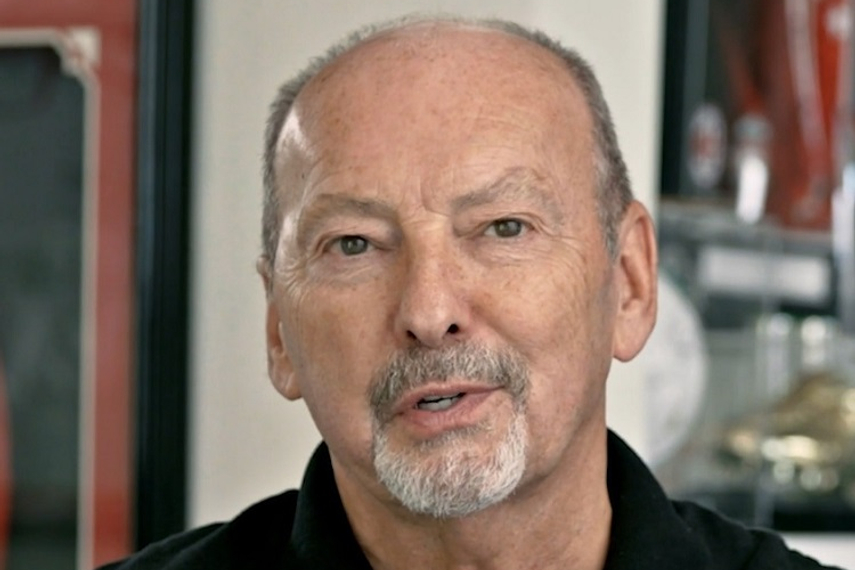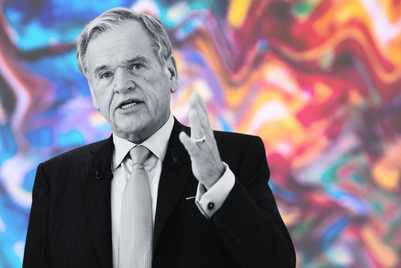
Peter Moore, senior vice president for sports and live entertainment, Unity, took to the virtual stage at the Cannes Lions Festival of Creativity. He explained the importance of creating truly immersive experiences and shared five tips for success that drew from his professional experience over the years.
Moore, who has worked for Sega, Microsoft, EA Sports and Liverpool FC before joining Unity, began his talk by sharing a simple habit he followed throughout his career: he ensured a connection with the consumer at all time. He then moved on to share five tips for success, along with takeaways.
1. Take it online
Moore was with Sega during the late 90s. His game plan was to take games online. However, the major challenge was the brand achieving this on the 56K-board modems that were customary at the time.
“It was a pivotal time for me. I learned what it took to make a successful game in the world of entertainment; at a time gaming was only just getting online. During this period, the overwhelming majority of those who accessed the internet did so via a dial-up modem. We needed to solve the challenges of making games run smoothly on a 56K-board modem. This connectivity opened up new opportunities for gamer engagement. I realised very quickly that our consumers were looking for something very different. They wanted to be connected in a new way, and not just next to each other on a couch; online empowered us to make that happen,” he said.
During his five years at the company, Sega launched the first online platform connecting gamers via the Dreamcast. The online service was called SegaNet. “This was the first time I experienced interactivity on a massive scale. We were able to connect people from all walks of life,” he said.
In a nutshell, online gaming on a console hadn’t been introduced yet. It was unclear how gamers would embrace it, if at all they would. "'Build it and they will come’ was our mantra, and come they did."
Takeaway: Don’t be afraid of planning for a future that you can’t yet visualise.
2. Invite the world
After Sega, Moore moved to Microsoft to head the Xbox business. Here, he was tasked with the launch of the gaming platform.
On his role at the company, he said, “Back then, we were moving away from the kind of gaming where gamers played with mates on the couch to where they now played with fellow gamers. Their physical location or time zone didn’t matter. We made the pivotal decision not to have a telephone connection at the back. This forced them to adopt a broadband connection, thus paving the way for online gaming.”
Moore said that this was when the company launched Xbox Live – a paid subscription-based service – and labelled it a significant moment into interactivity and immersion. He explained, “You can do this even if the competition’s offering is highly discounted, or even free, as the Playstation Network was at that time.”
Takeaway: Have the confidence to charge for a premium product.
3. Direct to consumer
From Microsoft’s Xbox, Moore moved to EA Sports. Here, he oversaw the delivery of sports games like FIFA, Madden NFL, NCAA Football and NHL.
Explaining the challenge the company faced at the time, Moore said, “Customers perceived the company as very corporate, and there was a wall between them. However, we embraced the technological advances of the time which enabled us to connect with consumers like never before. They also helped us put a human face to EA. We used a whole manner of immersive experiences to connect and interact with our users, helping them with their problems directly on Twitter, being one of them.”
He added, “I truly believe that social connectivity is the lubricant to success. The most significant moment in interactivity and connectivity at EA was when we made the progressive approach to digitise our business and market, and sell directly to each consumer. This gave them the feeling of being closer to the company and more aligned with the company’s direction.”
Takeaway: No matter how well your business is going, competition and disruption lurk around the corner. Be ready to evolve and be poised to self-disrupt.
4. Bring on the joy
Moore’s next stop was as the CEO of Liverpool FC. Incidentally, the city is his hometown. During this stint, he was responsible for the club’s business, commercial and operational areas.
“You may think because Liverpool FC’s a football team, they do their connecting with fans by playing on the pitch. I knew from my previous experiences that connectivity and interactivity would be important for Liverpool. The club has hundreds of millions of fans across the globe across all time zones. Further, they have the need to feel connected to each other and the players. The legacy for me would be bringing the club and the fans closer.”
Moore said that the banner proudly displayed at Anfield says ‘Unity is Strength’. He was proud to have helped make that motto possible by utilising technology by uniting fans – both, local and global.
Key takeaway: Acquire, engage, grow. Open the funnel wide at the top to bring as many potential customers into your ecosystem.
5. Embrace the Metaverse
Currently, Moore is at Unity. The company aims to create and operate real-time 3D content in sports and live events.
“It’s what we believe will help you engage with your customers in newer and exciting ways. Over the last century, we have seen sports evolve from black-and-white to colour, from being consumed on TV to mobile devices, and from linear broadcast to digital-on-demand. Consumers are becoming more involved and require more flexibility in how they experience their content,” he said.
The aim is to make viewers control what they are watching with volumetric 3D. Moore added, “Today, we are still watching sports passively. Broadcasters and streamers are feeding us 2D, linear content. As for the management of sports, we are still seeing companies using 2D technologies to solve 3D problems. Take the video assistant referee in football, for instance, a prime and very controversial figure. I have always tried to use the technology at hand to push the limits of interactivity and connectivity to bring the consumer closer. But I have never been so excited about the potential of being part of something so innovative,” he said.
Explaining the possibilities of volumetric 3D, he added, “Imagine being able to interact with what’s happening on the screen, seeing the action from any angle, and even scrubbing time back and forth on your phone. We are about to revolutionise sports broadcasting forever.”
He ended his talk with five tips to forge even deeper connections with your consumers:
1. Embrace the technology that will help widen your audience, including disruptive opportunities.
2: Think about consumers globally, not just locally.
3: Look for opportunities to put a human face on your product.
4: Find new ways to bring joy to people’s lives with interactivity and connectivity.
5: Think about all the amazing ways that immersive technology can provide truly personal end-user experiences. And make people more connected with your brand.


.jpg&h=334&w=500&q=100&v=20250320&c=1)
.jpg&h=334&w=500&q=100&v=20250320&c=1)


.jpg&h=334&w=500&q=100&v=20250320&c=1)

.jpg&h=334&w=500&q=100&v=20250320&c=1)


.jpg&h=334&w=500&q=100&v=20250320&c=1)




.jpg&h=268&w=401&q=100&v=20250320&c=1)
.jpg&h=268&w=401&q=100&v=20250320&c=1)


